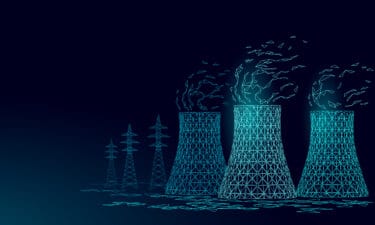Ever since the Fukashima nuclear disaster in the spring of 2011, prices for uranium have been severely depressed. From a high of $70 per pound before the catastrophe, uranium sunk below US$30 this year, where it remained for a few months. But now the price has finally started to recover, reaching $34.
While a return to $70 uranium is highly unlikely any time soon, there are reasons to be optimistic about future prices. And for anyone looking to make that bet, Cameco Corporation (TSX: CCO)(NYSE: CCJ) is the best way to do so. The company owns the best assets, has potential to grow production, and operates in safe jurisdictions.
On that note, below are three reasons why I believe such a bet will be successful.
1. Supply issues
It’s no secret that many suppliers can’t make money with uranium prices this low. As a result, producers have been shutting down mines or going out of business altogether, something that eventually should help prices rebound.
And recently, there have been other supply disruptions. Sanctions against Russia, one of the world’s biggest uranium producers, has threatened supply. There have also been uranium production issues for French giant Areva in Niger. Even Cameco itself has had to endure some turbulence, thanks to strikes at two of its mines.
These kinds of issues cannot be thought of as one-time events. Rather, they are part of a larger pattern that could significantly boost uranium prices well into the future.
2. Germany
After the Fukashima disaster, other countries have shunned nuclear power as well, the most notable being Germany – in 2011, Europe’s largest economy decided to phase out nuclear power by 2022. Unfortunately, that does not fit well with the country’s environmental goals, which involve cutting carbon emissions by 70% from 1990 to 2040. As it stands, more than 45% of the country’s electricity comes from coal.
At this point, a reversal of this policy seems unlikely, at least in the short term. But longer term, this could easily happen, giving another boost to uranium prices.
3. Japan
After Fukashima, Japan shut down its nuclear power production, and unfortunately has paid dearly for doing so. Energy has had to come from other sources, such as liquefied natural gas (LNG). And LNG does not come cheap. Making matters worse, Prime Minister Shinzo Abe’s economic policies have resulted in a weaker currency, making these imports even more expensive.
In fact Japan’s trade balance worsened by a cumulative $169 billion from 2011-2013, most of which was due to energy imports. This is especially bad news for a country like Japan, whose government debt level is the highest in the world, at 244% of GDP. If investors lose confidence in Japan’s economy, and start demanding higher interest rates on the government’s debt, that could spell serious trouble.
So the country desperate needs to restart its nuclear power production, and Mr. Abe is on board with the idea. This will take time – nuclear power remains very unpopular among the Japanese. But eventually that transition must take place. And when it does, that will be very good news for uranium prices and Cameco’s share price. You just have to be willing to wait.






